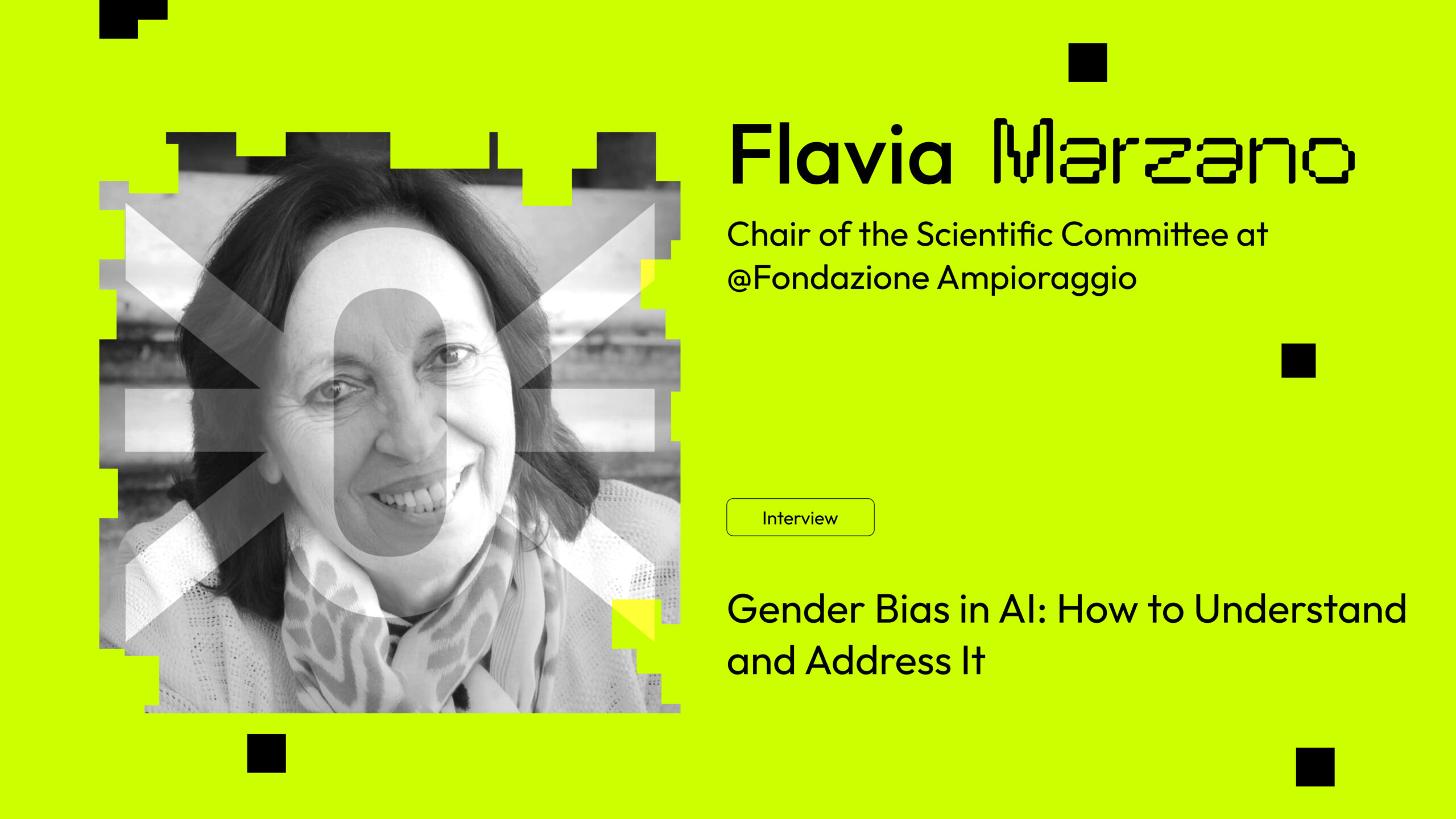Gender Bias in AI: How to Understand and Address It with Flavia Marzano

In our second Aracne interview, we meet Flavia Marzano, a key figure in the field of technological innovation and digital transformation. With many years of experience in Public Administration and a continuous commitment to inclusion and diversity, Flavia offers us a unique perspective on how artificial intelligence can be used to promote gender equality and improve representation in the fashion industry.
Could you tell us a bit about yourself and your career path? What have been the most significant milestones in your career in the field of digital transformation and technological innovation?
I am a computer scientist, university professor, and consultant on various topics related to technological innovation. I have worked on Digital Transformation, Innovation Strategies, Formulation of innovation regulations, Open Government and Open Data, Smart Cities, and reducing cognitive biases in artificial intelligence. I am currently the Chair of the Scientific Committee at the Ampioraggio Foundation.
I have dedicated much of my career to innovation in Public Administration, collaborating with local and national entities to develop regulations such as the Digital Administration Code and regulations on Open Data and FOIA. As an assessor in Rome, I was responsible for innovation and equal opportunities and created the Punti Roma Facile (PROF), now funded nationally and renamed Punti Digitale Facile. Additionally, I offer mentorship to young women to help them in choosing a university path, finding a job, changing careers, and overcoming fears related to exams.
I teach in various university Master’s programs, mainly in the Valore PA programs, where I focus on innovation in Public Administration.
You have worked extensively on analyzing the social and strategic impact of advanced technologies. Could you share some specific experiences regarding the identification and mitigation of gender bias in AI systems?
I have delved into the topic of gender bias in AI, writing articles and conducting training. Gender bias can manifest in various ways. For example, if the data used to train models is unbalanced in terms of male and female representation, the model may learn distorted or stereotypical relationships. Natural language processing (NLP) models can absorb and replicate sexist language present in training texts, producing discriminatory outputs. In work environments, a model might suggest roles or opportunities based on gender if the training data reflects gender discrimination. In image analysis data, there may be implicit assumptions about gender roles and activities, affecting the model’s performance in invalid contexts. Even in health data, there can be gender assumptions that affect diagnoses and treatments.
To mitigate these biases, it is crucial to recognize the problem and carefully analyze the data used to train AI models. Diversifying development teams, including ethics experts, sociologists, psychologists, and representatives from the communities involved, can help identify and address biases more effectively. Additionally, conducting regular audits of AI models, ensuring transparency in decision-making processes, and implementing regulations that require the evaluation and mitigation of biases are crucial steps. Training and educating IT professionals, developers, and users on the importance of recognizing and addressing biases in AI is equally important. Finally, it is necessary to continuously monitor the effectiveness of strategies adopted to mitigate biases and make necessary adjustments based on the evolving context.
How do you think artificial intelligence can be used to promote gender equality, especially in the fashion and technology sectors? Do you have examples of successful projects or initiatives in this area?
Artificial intelligence can promote gender equality in various ways. For example, AI algorithms can analyze large amounts of data regarding gender representation in media and advertising, helping to identify inequalities and stereotypes. In fashion, AI can personalize the online shopping experience, suggesting clothing styles that fit different gender preferences and representing a broader range of models. Tech companies can use AI in recruitment processes to reduce gender bias and promote diversity in teams. AI can also support education through e-learning platforms that promote courses on gender equality and STEM careers for women.
Some successful initiatives include Project Include, which provides guidelines for improving diversity and inclusion in corporate teams; GenderMag, which uses AI analysis principles to identify and correct gender bias in software; and Virtual Mentor, a platform that uses AI to provide personalized mentoring for women in the tech sector.
In your opinion, how can AI influence the fashion sector, particularly regarding the representation and inclusion of women? Are there examples of how AI can enhance diversity and inclusivity in fashion design?
I’m not an expert in fashion, but I suggest some ideas. Artificial intelligence can significantly impact the fashion sector, especially in terms of representation and inclusion of women. AI can analyze fashion data to predict consumer trends and preferences, create personalized shopping experiences, and develop virtual models that represent a wider range of body types, ethnicities, and genders. Additionally, AI can help reduce biases in creative processes and support women entrepreneurs in the fashion industry.
Some interesting initiatives include Stitch Fix, which uses AI algorithms to personalize clothing recommendations, promoting inclusive fashion; The Fabricant, a digital fashion house that creates virtual clothing, representing a diversity of models without the physical limitations of traditional fashion; and Modsy, an interior design platform that uses AI to create personalized design experiences, an approach that can also be applied to fashion to promote inclusivity.
The growing use of AI raises various ethical issues, especially regarding the perpetuation of gender bias. What are your main ethical concerns when it comes to AI? How would you suggest addressing these challenges to ensure fair and responsible use of technology?
These are the concerns I mentioned earlier when discussing cognitive biases, with periodic audits; by proactively and responsibly addressing these ethical concerns, we can leverage the potential of AI to promote inclusivity and equity, while ensuring that technology does not perpetuate or amplify existing inequalities.


